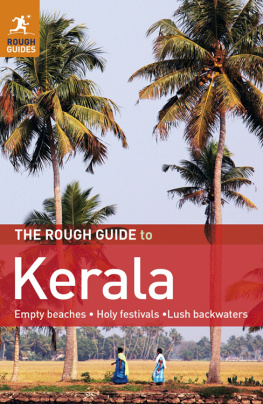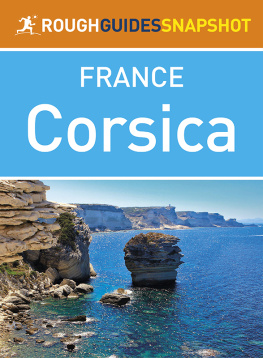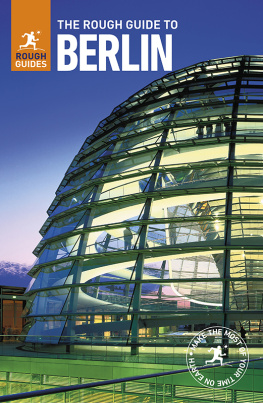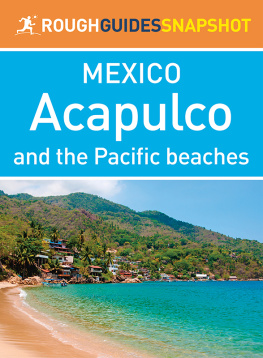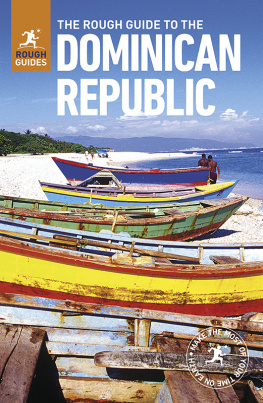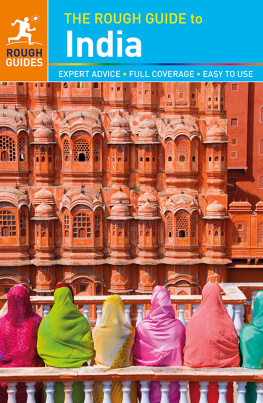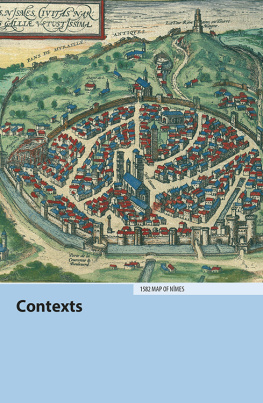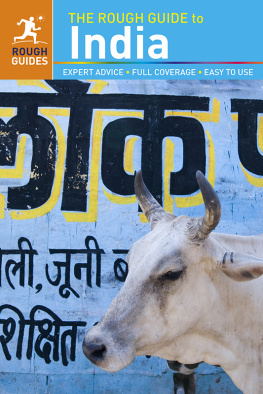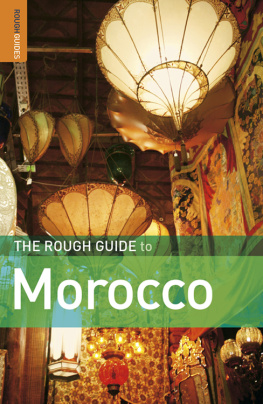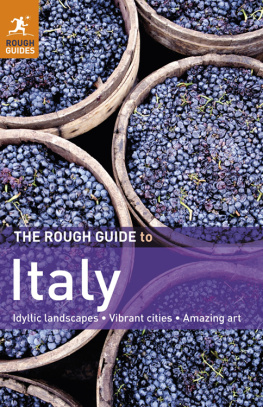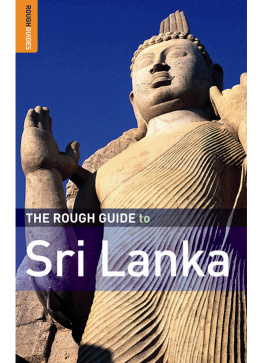How to Use this Rough Guide ePub
This Rough Guide is one of a new generation of informative and easy-to-use travel-guide eBooks that guarantees you make the most of your visit before, during and after your stay. Use this eBook both to plan your trip and explore your destination when visiting. So, before you depart, check out the illustrated Introduction, plan your itinerary using the wealth of suggestions on offer, or simply browse the guide and be inspired.
The best way to explore this guide is to begin at the main table of contents. The first section of the eBook gives you a flavour of the destination, with must-see sights and suggested itineraries. This is followed by: the Basics essential practical information; the best sights, area by area; listings on everything from hotels and restaurants to festivals; and Contexts, the history of the destination and its presence in popular culture.
Shorter contents lists appear at the start of every section in the guide, and are designed to make chapter navigation quick and easy. You can jump back to these by tapping the chapter-heading links that sit with an arrow icon at the end of every article.
Every area of the destination has a clear and beautifully presented map. Depending on your hardware, you will be able to double-tap on the maps to see larger-scale versions fill your screen.
As you use this guide, youll notice that some entries are marked by a small Rough Guides running man icon; this denotes the authors picks. You can select your own favourites and create a personalized itinerary by bookmarking the sights, venues and activities that are of most interest, giving you the quickest possible access to everything youll need for your time away.
Introduction to Kerala
Green and gold are the defining colours of : green for the tropical lushness that bursts from every patch of ground in the state; gold for the prosperity that has for many thousands of years been a consequence of this abundance. You see the two in combination everywhere, in the borders of the white cotton mundu worn by Keralan men, in the ceremonial umbrellas hoisted over temple deities as they're processed on elephant back during festivals, and in the make-up of the kathakali hero, framed by his trademark jewel-encrusted headdress.
Gold and green will also dominate your first impressions of Kerala if, like most travellers, you arrive by plane from the Arabian Sea. Landing at Thiruvananthapuram (Trivandrum) or Kochi (Cochin), a flash of vivid golden sand brings the ocean to an abrupt end, giving way to a carpet of vegetation: bands of shaggy coconut palms interwoven by tangled rivers, canals, lagoons and water-logged rice paddy that stretch to a horizon bounded by forested mountains.
The lower slopes of the Western Ghats, less than 100km inland, are the source of the spices that drew traders from across the world to the shore known for centuries as the Malabar Coast. Ships from ancient Rome, China, the Arabian peninsula, Portugal, Holland and Great Britain sailed to India's southwestern seaboard to fill their holds with pepper, as well as cinnamon, cardamom and ginger. They brought with them a cornucopia of new ideas, technologies, foodstuffs and religions, which the Keralans embraced and made their own.
Scan the skyline of any town in the state today and you'll see, rising from the red-tiled rooftops alongside mosque minarets and the brass finials of Hindu temples, whitewashed church gables whose congregations claim descent from converts evangelized by Saint Thomas in the first century AD. In Fort Cochin, the region's pre-eminent colonial trading post, cantilevered fishing nets introduced by Chinese immigrants hang like giant predators along a waterfront dotted with Portuguese palacios, Dutch merchants' mansions, British warehouses and Jewish synagogues.
Adaptability and openness to the outside world continue to be central to the Keralan character. When recession started to bite in the 1970s, many Malayalis (a name derived from the official state language, Malayalam) left to work in the Persian Gulf. Now remittance cheques sent home by them account for 25 percent of GDP. Behind the state's economic success story lies its long-standing policy of universal education. Thanks to enthusiastic patronage from the region's ruling maharajas and, after Independence, successive communist governments, Kerala enjoys the highest literacy rates of any Indian region and has led the field when it comes to gender equality and family planning.
Yet while innovation has always been central to Kerala's prosperity, Malayalis remain staunchly conservative. Traditional dress is the norm, even in the cities, while the old hierarchy of caste, in spite of decades of social reform, continues to dominate political life. From the visitor's point of view, this can have its downsides not least the fact that most temples remain off-limits to non-Hindus. But it also accounts for the survival of Kerala's extraordinary traditional arts scene. A wealth of Malayali music, dance and ritual drama forms continue to be widely performed and enjoyed across the state, in precisely the same contexts as they have for centuries. One of the world's most elaborate systems of holistic medicine, ayurveda, has also been kept alive for thousands of years in Kerala, where it now enjoys a new lease of life as a spa therapy.
Moreover, thanks to Kerala's go-ahead tourism industry, you can enjoy these unique cultural phenomena from the comfort of some truly wonderful accommodation. Whether an ancestral tharavadu mansion made of teak or a converted kettu vallam rice barge in the backwaters, a British tea planter's bungalow high in the Cardamom Hills or a royal hunting lodge lost in the jungle, heritage hotels and homestays run by local families offer plenty of excuses to get off the beaten track and will deepen your experience of a region that, for all its paradoxes and contradictions, never fails to astonish.
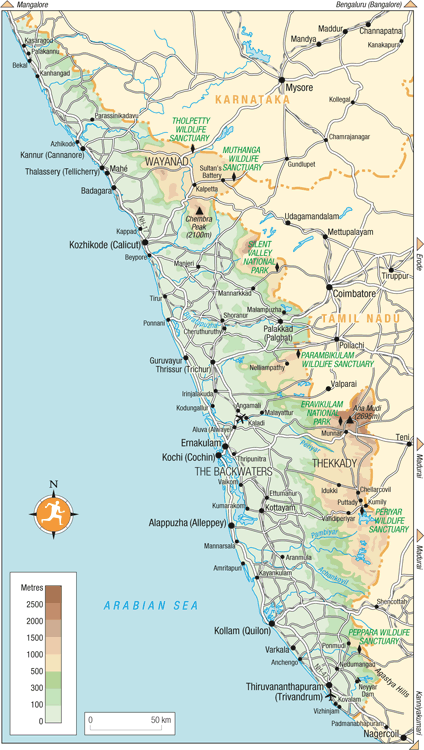
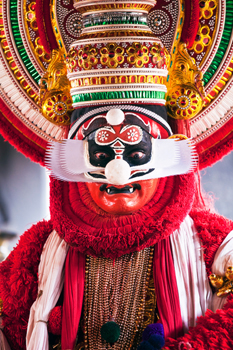
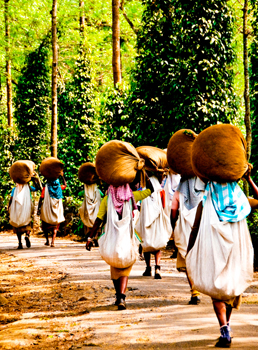
Tea plantation
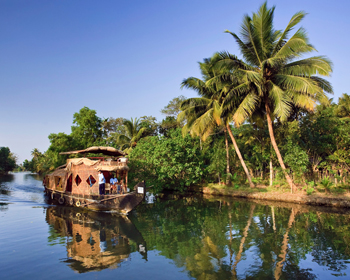
Houseboat on the backwaters
Fact file
Edged by 580km of coastline, Kerala is 130km wide at its broadest point and covers a total surface area of 38,863 square kilometres; it takes around twelve hours to ride from one end to the other by train.
In March 2001 (the date of the last census) the population of Kerala stood at 31.8 million, of whom 56 percent were Hindu, 25 percent Muslim and 19 percent Christian.
Both the literacy rate (91 percent) and life expectancy (73 years) are the highest in India. GDP weighs in at Rs37,500 (545/$845) per capita, bolstered by remittances sent from overseas (one in six Keralans work abroad).
Malayalam is the official language of the state and the mother tongue of nearly all Keralans (also known as "Malayalis"). English is most people's second language, and is widely spoken in large towns, resorts and in businesses across the state.
Keralans consume more alcohol per head of population than any other Indian state, with sales in excess of $1.2 billion annually a major source of tax revenue for the government.

